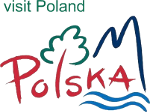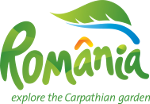In preparation for TRANSPOLONIA, we spent many weeks covering more than 6,000 km as part of the reconnoitre. The final route is approximately 1280 km. More than 60% of the roads are unpaved (field roads and tracks), another 30% are asphalt B class roads and the last 10% can be classed as A roads.
Of course geographically it is impossible to see everything within 7 days. However, by exploring incredible landscapes with the emphasis on cultural and historical links, we stride to offer the best possible package that will satisfy even the most fastidious of tastes.
During the whole trip we use the classical roadbook denoted by ‘tulip diagrams’ (an easy-to-follow graphic description of the route), along with the inlay of GPS coordinates. In the case of tourist attractions you will find notes and information on how to get there and back on the road. The tour is divided into stages ending every day in a different place. During the event it is anticipated there will be two nights staying in guest houses, with further accommodation in the field sited in picturesque places. Two days during the event will be guided, then split into two convoys and each of the convoys allocated a driving guide.
At each stage participants will be able to re-fuel, shop, stock up on provisions, also refreshments in the local tavern, so there is no need for taking additional jerricans and mountains of food.
EQUIPMENT
As mentioned, to join the TRANPOLONIA tour you need a car with four-wheel-drive. This can be a basic SUV with or without a low ratio gearbox, for example a Toyota Rav4 or Land Rover Freelander. The only mandatory specification is a reliable hitch at the front and rear of the vehicle. In the case of SUVs, this may mean having to strengthen the manufacturer’s standard towing point. Regarding tyres, your 4×4 should shod with a minimum of AT (All Terrain) pattern tyres, preferably of a higher and/or wider size to those fitted as standard by the manufacturer. Of great benefit in rocky conditions and pot-holed roads, these upgrades will prove more than adequate to cope with the entire route. Last but not least, although we always endeavour to avoid scratches to a vehicle’s paintwork, owners must accept that minor bodywork damage caused by overhanging vegetation and suchlike is always a possibility when driving off-road.
HOW TO GET THERE AND BACK:
There is no problem with travelling to Poland as the European motorway network extends well beyond Central Europe. The easiest way to get there and back is the A2 and A4 motorway from Geant, Antwerpen, Essen, Leipzig, Wroclaw and Krakow.

The entire route from Dunkirk to Rytro is about 960 miles. Route proportion looks like this: 80% motorway, 20% of the remainder A and B class roads. Unfortunately, the worst part of the route is in end of tour. It counts for about 150 miles of the journey, so 4-5 hours needs to be devoted to it.
Therefore, the recommended tried & tested itinerary is to leave the ferry at Dunkirk in the very early hours so that you can get to Poland in one day, then leave the next day for the final run to start point.
Please also remember about speed limits on motorways and tolls (Vignette) for motorways.
ARRIVAL OF THE START:
Crews arrive up to 11.00pm at the hotel. Crews arriving earlier will be checked-in and given all the materials and instructions associated with the event.
Other crews will be able to check-in next day from 8.00am to 9.00am.
If you have any problems with getting the start in a specified period (failure of the car, late for the ferry, etc.) the crew is required to inform the organiser.
on first day of tour, at 9:30am crew briefing takes place together with a meeting relating to the rules and regulations, routes and events.
Before the start, each crew must produce documents related to the vehicle (MOT, Insurance, Green card – if applicable) and driver’s license. None of these documents will be excluded from participation in the event without reimbursement (See Rules).
After this meeting the crews are released on route.
ABOUT POLAND
The Republic of Poland is located in Central Europe. It is bordered by the Baltic Sea to the north-west along a 524-km coastline, by Germany to the west (along a 460-km border); the Czech and Slovak republics to the south (1310 km); and Russia, Lithuania, Belarus and Ukraine to the east and north-east (1244 km).
Poland’s national emblem is a white eagle with a golden crown on a red background. The national flag is white and read.
The people of Poland use the Polish language. The population, over 38.5 million strong, occupy an area of 312,700 square kilometers.
Its capital and the largest city is Warsaw, which has a population of over 1,700,000. New administrative division of Poland was introduced in January 1999. The capital cities of the new sixteen voivodships are Bialystok, Gdansk, Katowice, Kielce, Krakow, Lublin, Lodz, Olsztyn, Opole, Poznan, Rzeszów, Szczecin, Torun, Warsaw, Wroclaw and Zielona Góra.









